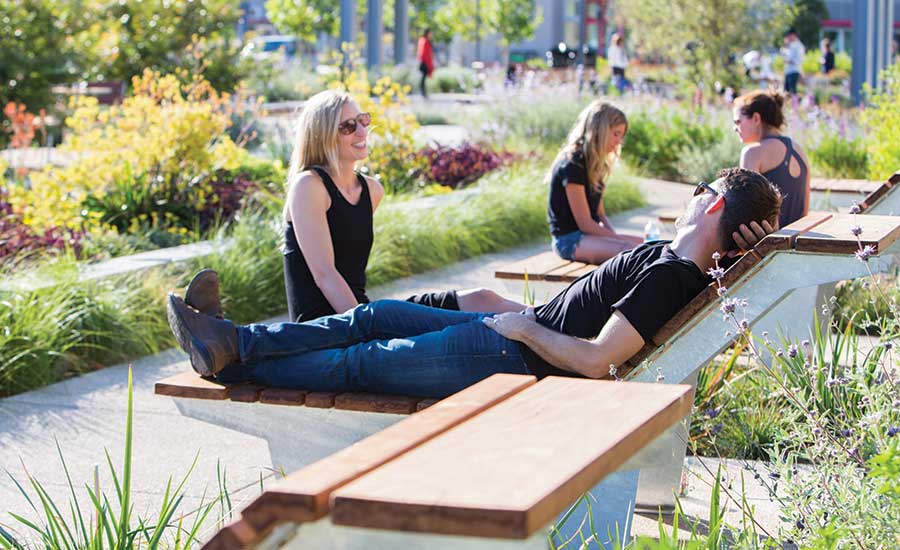Pamela Conrad was irked that landscape architects had been left out in the cold by the building sector’s movement to cut greenhouse gas emissions. So she took action and parlayed a $25,000 grant from the Landscape Architecture Foundation into a global initiative for her profession, called Climate Positive Design.
Conrad is now the voice of landscape architects in the conversation about climate action. And Climate Positive Design has become the go-to website for the first sites-specific low-carbon design tool: Pathfinder is free to use by all landscape architects.
“Now is the time to start interdisciplinary collaboration,” says Conrad, a principal of CMG Landscape Architecture. “Landscape architects can contribute to reducing carbon emissions in a meaningful way,” she adds.
And they are, more than ever, thanks to her campaign. A year after the initiative’s September 2019 launch, 1,006 individuals from 699 firms in 64 nations had committed to planting 777,657 trees. In a decade, Climate Positive Design figures that would sequester 1.6-million metric tons of CO2 beyond project emissions—equivalent to removing 313,282 cars from the road.
“Pamela wants to engage the entire landscape architecture community to address the issue of low-carbon design,” says Kristen DiStefano, an associate director at Atelier Ten, an environmental design and sustainability consultant that worked on Pathfinder. “Her initiative has huge potential.”
Landscape architecture has been called the decarbonizing design profession. Sites are the low-hanging fruit of decarbonization because plantings sequester CO2, offsetting the embodied carbon of plazas, streetscapes, parks, gardens, campuses and all other grounds. “Our projects could potentially sequester 1 gigaton of CO2 by 2050 beyond our emissions,” says Conrad.
The Climate Positive Design Challenge is intended to rally landscape architects to meet the ambitious 2050 goal. The challenge asks for commitments to design sites that eventually sequester more carbon than they embody. Suggested time frames “to positive” are five years for parks, residential, on-structure, mixed-use and campus developments and 20 years for new streetscapes and plazas.
To help landscape architects achieve the targets on their projects, Conrad also sparked the creation of Pathfinder, the free digital design tool. “Pamela has created the first carbon calculator for our profession,” says landscape architect and educator Martha Schwartz, founding principal of Martha Schwartz Partners.
For use early in design, Pathfinder measures the embodied carbon of different site materials against the sequestered carbon of the plantings. “There was so much guidance and so many standards and metrics for buildings and very little for outside the buildings,” says Conrad.
Growing up working on her family’s farm in rural North Platte County, Mo., shaped Conrad’s appreciation of the land and the landscape. “It was an amazing opportunity to connect with the environment and understand and learn respect for the fragility of the land, plants and the life and death of animals,” she says.
Farm life also taught her a strong work ethic. Both her parents worked the farm and also had jobs off the farm. A summer job at a nursery, among other experiences, led Conrad to become a plant science major with an emphasis on landscape design at the University of Missouri, Columbia. In 2006, she got her master’s degree in landscape architecture at California Polytechnic Institute, Pomona.
Conrad landed at CMG in 2012, after a few jobs, including one that took her to Shanghai and opened her eyes to other cultures while building her experience in open-space public projects. She is especially interested in accessible, equitable and ecological waterfronts.
Conrad isn’t stopping with Climate Positive Design and Pathfinder, which continues to expand. She also is helping develop carbon pilot credits for landscapes for SITES and LEED certification.
Schwartz calls Conrad “amazing, approachable, down-to-earth, fun and focused on pressing her agenda forward.” She adds, “What she is doing is hard work, but she’s really started something.”





